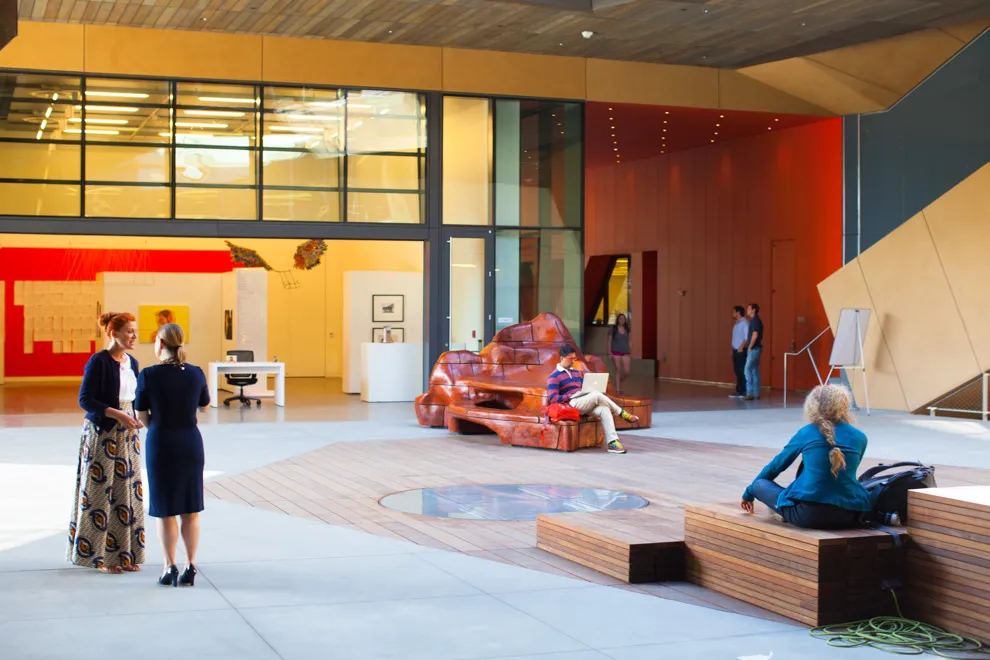In a normal quarter, students in art studio classes have a myriad of materials and machines at their disposal to bring their artistic visions to life. But in light of the shift to online learning, professors are devising creative solutions — up to and including mailing students 3D printers — to address the loss of campus resources, as well as taking advantage of some positive changes that Zoom has enabled.
While some challenges have been addressed through University funding, other challenges, like differences in home environments, are harder to overcome.
Art practice lecturer Lauren Toomer, who teaches ARTSTUDI 140: “Drawing I,” said some class experiences, like drawing live models, are not possible through a Zoom call. Students could more easily create their own still lifes, but that was not a possibility with figure drawing.
To combat these restrictions, some professors have obtained University funding to send students supplies so that they replicate the studio environment at home. Art practice lecturer Dana Hemenway, who teaches ARTSTUDI 151: “Sculpture I” and ARTSTUDI 252: “Sculpture II,” said that her students were sent 3D printers to use for their assignments.
“It comes in a kit, kind of like IKEA furniture, and they’re putting it together, building their printer, and then we’ll start using it to print 3D models,” Hemenway said.
Toomer has also found creative ways to adapt her class. Drawing and painting managers now explain to students over Zoom how to set up a safe home studio instead of properly using the studios available at Stanford. The class is also sending students non-toxic spray, gloves and goggles, according to Toomer.
Even with instructors’ various adaptations, some students have opted to take different classes that are better suited for an online format. Catherine Wang ’21, who is pursuing an art degree, said she chose not to take traditional visual arts courses this quarter after realizing that she would not have access to studios with “proper lighting, sufficient space, equipment and ventilation” or “machines and tools in the sculpture workshop, or any printing presses.”
Instead, Wang opted to take ARTSTUDI 173E: “Cell Phone Photography.”
“I thought that if I took a digitally based art class instead, I wouldn’t be missing out on as many aspects of the course,” she wrote in a statement to The Daily. “By nature, cell phone photographs are meant to be seen on screens, so critiques won’t be much affected. I also don’t need elaborate, or really any, setups or tools to create cell phone photographs.”
Regardless of how much work instructors have dedicated toward ensuring that students can still have a meaningful and educational experience in their art classes, the online format poses some differences in accessibility that the department can not as easily address.
Hemenway said that students’ home environments can present a potential obstacle. She said access to a campus classroom operates as an “equalizer” for students from different backgrounds.
“Whatever you have going on in your life, you leave it for that one or two hours and exist in the space that’s dedicated to learning a certain subject,” she said. “When you don’t have that clean slate with which to focus on your coursework, that’s a major concern, and one I’m trying to find multiple ways of accommodating.”
Aside from these challenges, Zoom has allowed professors to make improvements to their classes as well. Toomer said that there are certain features of the platform that enable students to better understand lecture content, as well as communicate with their instructors.
“[Students] get a very up-close view,” she said. “That’s a positive because sometimes students are further away; some seats are closer to the board. They can really follow along, and they are equally as engaged. Sometimes students want to have a conversation without asking in front of their classmates, so [the chat] is a great option for students who want more of a private interaction during this course.”
While art studio classes have changed in response to this quarter’s circumstances, professors said that their students’ dedication to their art has not.
“What went better than expected is everyone’s willingness to continue to learn,” Hemenway said, noting students’ “commitment to engaging in the coursework and connecting with each other through Zoom.”
“The caliber of the projects that students have been able to dive into while they’re working on their own has been really inspiring,” Hemenway added.
Contact Jessica Zhu at jesszhu ‘at’ stanford.edu and Xinyi Wang at karenwxy ‘at’ stanford.edu.
